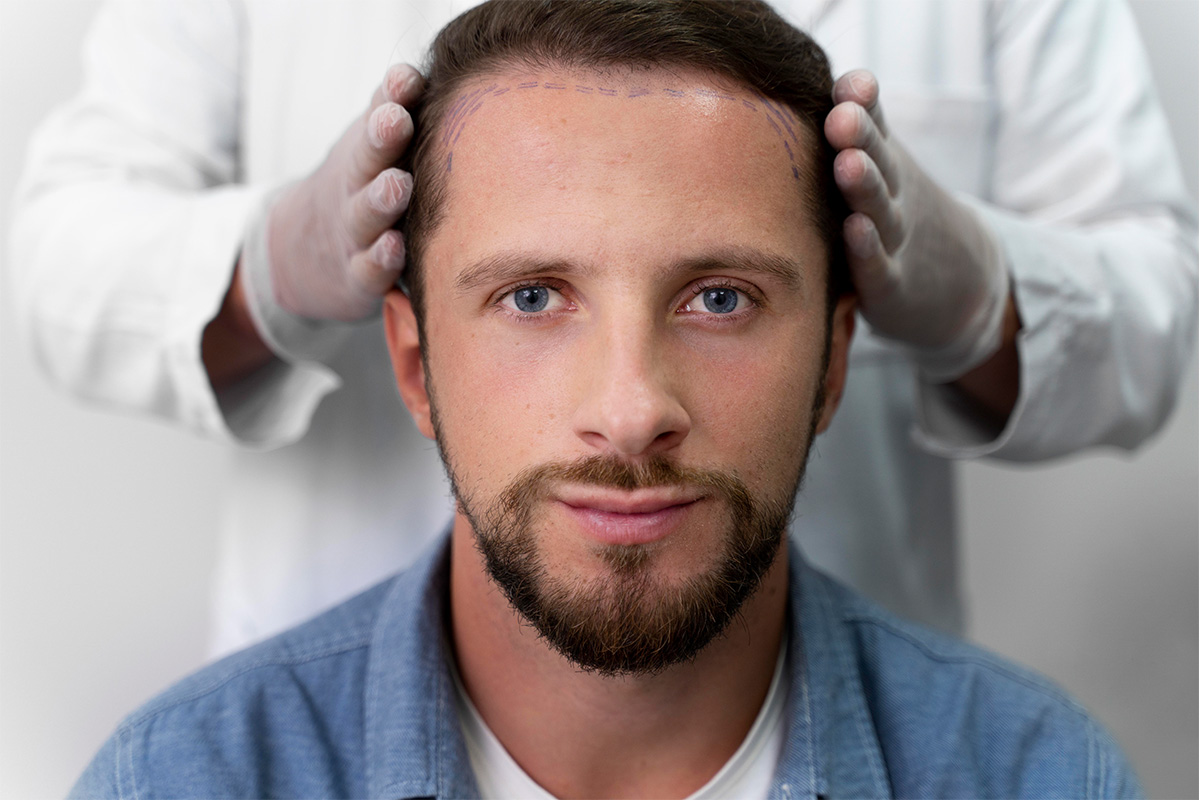Undergoing a hair transplantion implies having a series of characteristics to be a good candidate. Making sure that you fit into the profile for this type of hair restoration method will set you up for a successful treatment, clearing the scenario for both you and the doctor when it comes to:
- How viable is it to perform the hair transplant, considering your hair loss stage.
- The expectations about the final results.
- All the steps involved before, during, and after the procedure.
Taking these into consideration is key to having a good and realistic hair growth journey, which is why your initial consultation with our hair specialists is very important, as this is where they’ll be able to evaluate your case and guide you through the best options accordingly.
Tabla de Contenidos
What Aspects Will Be Evaluated To See If You Are A Good Candidate For A Hair Transplant?
1. The Quality of Your Donor Area
The donor area is the region at the back of your head from which the hair is extracted to be later implanted in the areas affected by hair loss. After applying local anesthesia, the surgeon takes the follicular units one by one (a follicular unit can contain between 1-7 hairs).
As this is the place from where you’ll donate your hair to cover the troubled areas, it is very important to evaluate if it is in optimal conditions to achieve full density, natural-looking results:
- Hair density. Hair density is measured by the number of single hair strands that grow per square inch of your scalp. If your donor hair is naturally dense, you’re likely to get better results from the procedure.
- Hair texture. Hair texture is defined by the shape of the root, which can be straight or curved – that would result in wavy or curly hair. Hair transplant can be performed on any type of hair, however, curly hair transplants require a slightly more complex procedure compared to straight hair transplants, because the doctor needs to handle the extraction and implantation more carefully to match the curly shape in a natural way.
- Hair thickness. If you have coarse hair, then usually fewer grafts would be needed for a full-looking transplant, but if you have fine hair, things can be a little complicated. In this last case, there are two scenarios: you can either require a large number of grafts to achieve density or not be eligible for a hair transplant at all. Fortunately, if this is your situation, there are non-surgical treatments you can undergo to increase your hair thickness, so that you can do a hair transplant in the future, like mesotherapy.
It is very important to mention that If you have any skin condition on your scalp – like dandruff, seborrheic dermatitis, psoriasis or eczema – a hair transplant can’t be performed until said condition is treated.

2. Realistic Expectations
The vast majority of patients who undergo a hair transplant are satisfied with the aesthetic and emotional benefits they gain after the procedure, however, it’s important to understand that there are limits to what hair transplantation can do. When considering this surgery, you must take these into account:
- A hair transplant can help you regain your hair, but never with the same density you had as a teenager (nor should you want to). Hairlines change as we age and that’s completely normal.
- Hair transplantation relocates natural hairs. This means that it does not produce new follicles.
- Hair transplantation does not stop the native hair from thinning and/or falling in the future. The transplanted hairs are permanent because they are genetically different from thinning hairs, but those already affected will continue to deteriorate and eventually, fall. However, if the hair loss is slight or mild, this can be prevented before, during, and after the procedure.
- Some patients achieve their desired look with one procedure, but others may need a second hair transplant to reach their aesthetic goals.

3. Commitment and Patience
The hair transplant procedure is usually performed in a 8.5 hr timespan, involving the following steps:
- Extraction: 4 hrs.
- Lunch break: 30 min.
- Implantation: 4 hrs.
The phases of growth after a hair transplant may vary from patient to patient, but in general terms, this is what you can expect:
- First 7 – 15 days: Recovery
- 0 – 3 months: Shedding Phase
- 3 – 6 months: Growth Phase
- 6 – 11 months: Hair Maturation
- 12 month: Final Results
The skin on your scalp needs time to heal and the implanted hair needs it too to settle and start its own growth cycle.
4. Age
Hair transplants are usually done in patients aging from 30 – 50 years old. For those younger than 30, we suggest taking hair growth medication or non-surgical treatments to stabilize their hair loss before undergoing a hair transplant, as usually at that stage of life, there’s uncertainty about how this condition will progress as they keep growing (from 18 – 29 your hairline is still forming).
On the other hand, after 50, patients may have chronic medical conditions that would need to be taken into account before a hair transplant, such as diabetes, heart problems, and high blood pressure (among others), which could put the surgery at a higher risk.
5. Hair loss stage
Patients suffering from slight to mild hair loss are usually good candidates for a hair transplant – which can cover areas like the hairline, temples, and crown. Patients who have severe hair loss may not be candidates, as often, in these cases, the troubled areas extend to the back of the head (let’s remember that this region must be in optimal conditions for the procedure to be successful).
You may also like: What is alopecia or hair loss?
Hair transplant is not a cure for male pattern baldness. The transplants will cover bald areas of the scalp, but they will not protect you from further hair loss. Male pattern baldness is a progressive condition that can develop faster in some individuals than in others.
Do you think you comply with these 5 factors? If you are not sure, don’t worry! Our hair specialists at Hairfix Mexico can evaluate your case in-office or via video call to see if a hair transplant is the right option to suit your needs. The initial consultation plays a fundamental role in the outcome of your hair transplant procedure. Contact us today for more information about the best hair transplant in Mexico! Ask us about affordable hair transplant.






